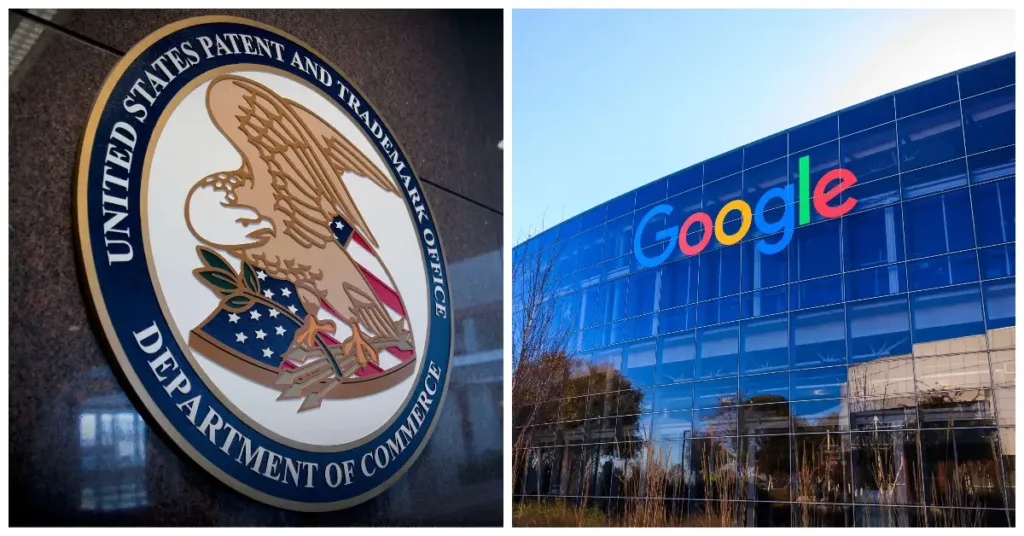TDCommons offers inventors a platform to assert ownership over innovations without the need for patent filings. Why does it remain relatively unnoticed?

Table of Contents
Google’s Innovative Solution
A team of Google engineers recently devised an innovative solution to aid individuals struggling with presentations during video calls. Their idea involves utilizing algorithms to detect indicators like increased pulse rate or prolonged pauses (“umms”), prompting a generative AI bot to seamlessly take over the speaking role.
Rather than being announced at a major event or published in an academic journal, this groundbreaking concept was unveiled in a 1,500-word post on TDCommons.org, a relatively unknown website owned and funded by Google for nearly a decade.
Google had never previously engaged with the media about this website until WIRED stumbled upon a link to an idea on TDCommons last year.
TDCommons hosts a plethora of inventive ideas from Google and other organizations, such as HP, Cisco, and Visa. These ideas span various topics, including enhancing smart home device coordination for improved sleep, safeguarding privacy in mobile search outcomes, and utilizing AI to summarize a person’s activities based on their photo archives.
The purpose of TDCommons is to provide a platform for sharing potentially valuable ideas that may not justify the substantial expense of pursuing a patent. By publicly disclosing the technical specifics and establishing “prior art,” companies like Google can preemptively prevent others from patenting similar concepts, thus averting future disputes.
Google incentivizes its employees to contribute to TDCommons by offering a $1,000 bonus for each submission, along with the ability to openly share their otherwise confidential work via a readily shareable link.
While TDCommons contributes to Google’s ongoing efforts to foster innovation and combat patent-related challenges, the initiative faces obstacles in navigating governmental regulations and competing with more extensive archives.
Despite its challenges, TDCommons represents a step towards expanding public access to corporate innovation and redirecting resources towards fostering creativity.
Taking a Defensive Stance

The foundation of TDCommons traces back to the 1950s, mirroring the strategy adopted by IBM and later Xerox, who began publishing technical disclosures to serve as prior art.
This practice aimed to establish ownership of ideas and was instrumental in thwarting a significant portion of patent applications, with around 84 percent of rejections being influenced by prior art in recent years, according to the US Patent and Trademark Office.
During the internet boom of the early 2000s, entrepreneurs recognized the potential of bringing these defensive publications, known as “dpubs,” online. IP.com emerged as a prominent player, offering access to a vast database of inventions and documents, albeit at a cost. Unlike TDCommons, which is free, IP.com charges for both uploading and accessing content. The USPTO is one of IP.com’s major clients, with subscriptions covering most of its examiners and supervisors.
Google’s entry into the realm of defensive publications with TDCommons in 2015 reflected its evolving perspective on patents. As the company expanded into hardware and faced increased allegations of infringement, it sought alternative means to safeguard its interests and support inventors.
The slow uptake of TDCommons suggests that while some inventions have found a home on the platform, it has yet to match the volume of publications seen on IP.com. However, some ideas shared on TDCommons have transitioned into tangible features, such as a smartphone-based earthquake detection system.
Despite providing insight into Google’s innovation efforts, the tangible benefits of TDCommons to the company remain uncertain. Google acknowledges the need for improvement, particularly in tracking the impact of TDCommons on patent rejections and litigation. According to Kurt Sutter, a senior patent attorney, TDCommons is cited less frequently than IP.com in European patent records, indicating potential room for growth and optimization.
Is It a Failure?
For a defensive publication to effectively invalidate future patent claims, it needs to be readily accessible to examiners at the US Patent and Trademark Office (USPTO) when they search for prior art. However, TDCommons faces challenges in ranking well in search results, potentially hindering its discoverability by examiners. Despite Google’s efforts to have TDCommons included in the USPTO’s list of official research resources, alongside platforms like IP.com, it has yet to be added, for reasons that remain unclear.

The lack of widespread adoption by companies contributes to TDCommons’ low profile. Google’s Laura Sheridan notes that many companies are hesitant to upload to a platform that isn’t considered essential reading. Additionally, other tech firms indicate that defensive publications aren’t a focal point of their patent strategies currently.
In contrast, platforms like IP.com offer various benefits that attract customers, including enhanced search capabilities, cryptographic timestamps for publication verification, editing services, and popularity among USPTO examiners. IP.com also ensures customers are notified and provided with the opportunity to bulk export content in the event of platform closure, a feature not offered by TDCommons. Jim Durkin of IP.com compares the difference between the two platforms to displaying art in a prestigious museum versus a less prominent location, emphasizing the importance of accessibility and reliability in the patent publication process.
Google is optimistic about the potential adoption of TDCommons, especially as Kathi Vidal, the recently appointed director of the US Patent and Trademark Office (USPTO), becomes more settled in her role. While Vidal has prioritized issues such as determining patent eligibility for generative AI programs, she has also expressed interest in improving search tools for prior art, soliciting feedback from various organizations and offering her email address, director@uspto.gov, for input on establishing a new prior art repository.
However, previous efforts by the USPTO to support a similar initiative, such as the Prior Art Archive launched in 2018 in collaboration with Cisco, have faced challenges. Despite initial enthusiasm and partnerships with organizations like MIT, the archive’s functionality has deteriorated, with its search feature no longer operational. Both the USPTO and Cisco acknowledge difficulties in finding a path forward, though Cisco remains committed to collaboration efforts.
As Google awaits endorsement from the USPTO and other patent agencies regarding TDCommons, the company remains dedicated to maintaining the platform’s understated presence. Management of TDCommons is outsourced to academic software maker Bepress, with Google emphasizing its willingness to continue investing in the platform at a relatively low cost. Laura Sheridan of Google underscores the company’s commitment to TDCommons, noting its ongoing value and the benefits it offers, signaling Google’s intent to persevere with the initiative.
FAQs about TDCommons and Defensive Publications
1. What is TDCommons and what is its purpose?
- TDCommons is a website owned and funded by Google, established as a platform for sharing innovative ideas that may not warrant the expense of patent filings. Its purpose is to provide a space for companies and individuals to disclose technical details and establish “prior art” to prevent others from patenting similar concepts, thus averting potential disputes.
2. How does TDCommons incentivize contributions from inventors?
- Google offers a $1,000 bonus to employees for each submission made to TDCommons. Additionally, contributors have the opportunity to openly share their otherwise confidential work via readily shareable links.
3. What are the challenges faced by TDCommons and defensive publications in general?
- TDCommons faces obstacles in ranking well in search results, potentially hindering its discoverability by patent examiners. Despite efforts to have TDCommons included in official research resources, such as the USPTO’s list, it has yet to be added. Furthermore, the low adoption rate by companies contributes to its low profile.
4. How does TDCommons compare to other defensive publication platforms like IP.com?
- Platforms like IP.com offer various benefits, including enhanced search capabilities, cryptographic timestamps for publication verification, and editing services. IP.com also ensures customers are notified and provided with the opportunity to bulk export content in the event of platform closure, features not offered by TDCommons.
5. What is the outlook for TDCommons and defensive publications in general?
- Despite challenges, Google remains committed to TDCommons, emphasizing its ongoing value and benefits. As the landscape of patent publication and prior art repositories evolves, initiatives like TDCommons may play a crucial role in fostering innovation and preventing disputes in the future.



Howdy! newzertainment.com
Did you know that it is possible to send letter СЂroСЂerlСѓ legit? We make available a new and unique way of sending letters through feedback forms.
Contact Form messages aren’t likely to be sent to spam, since they are regarded as important.
We offer you the chance to try out our service for free.
You can rely on us to send up to 50,000 messages.
The cost of sending one million messages is $59.
This letter is automatically generated.
We only use chat for communication.
Contact us.
Telegram – https://t.me/FeedbackFormEU
Skype live:contactform_18
Pingback: Review: Nothing Phone (2a) best budget smart phone - Newzertainment